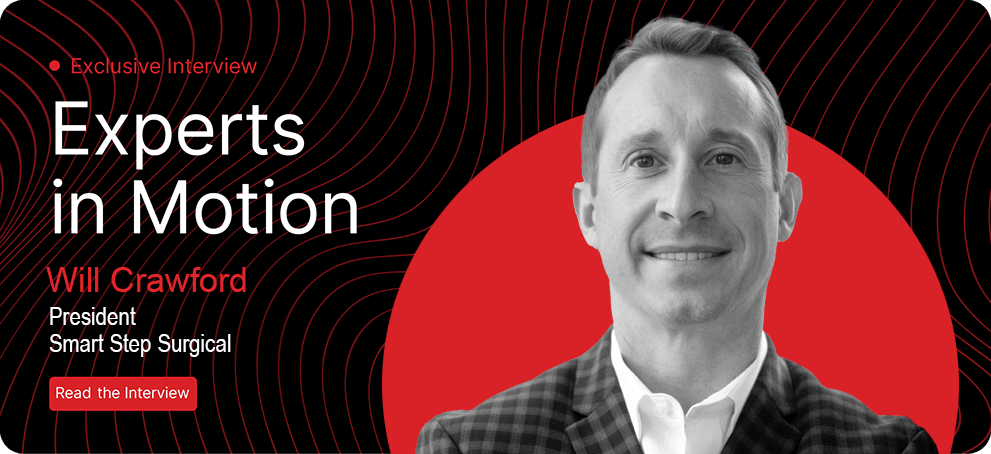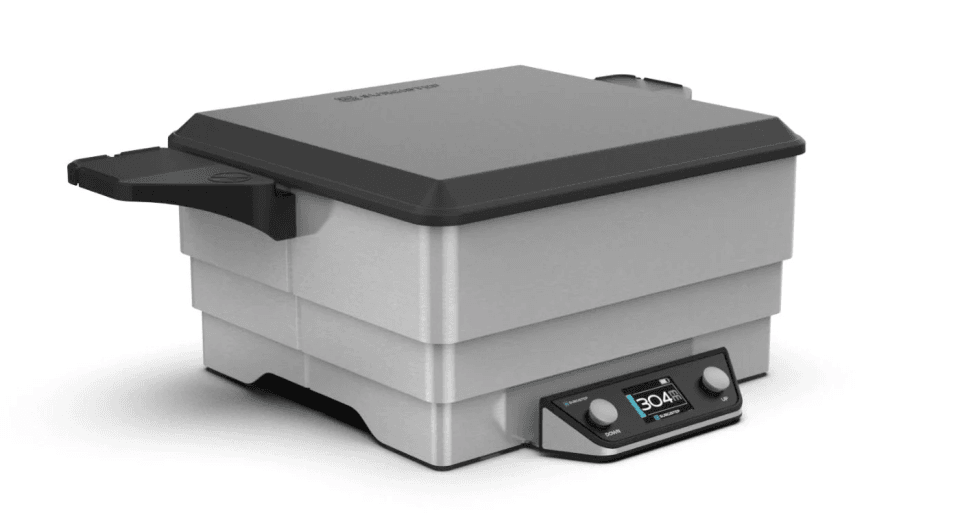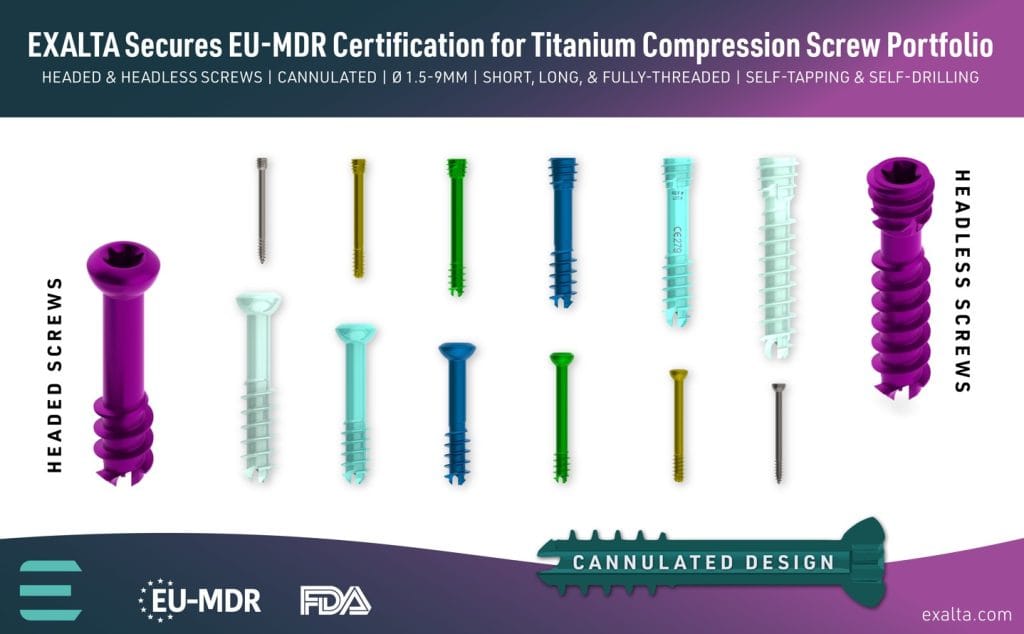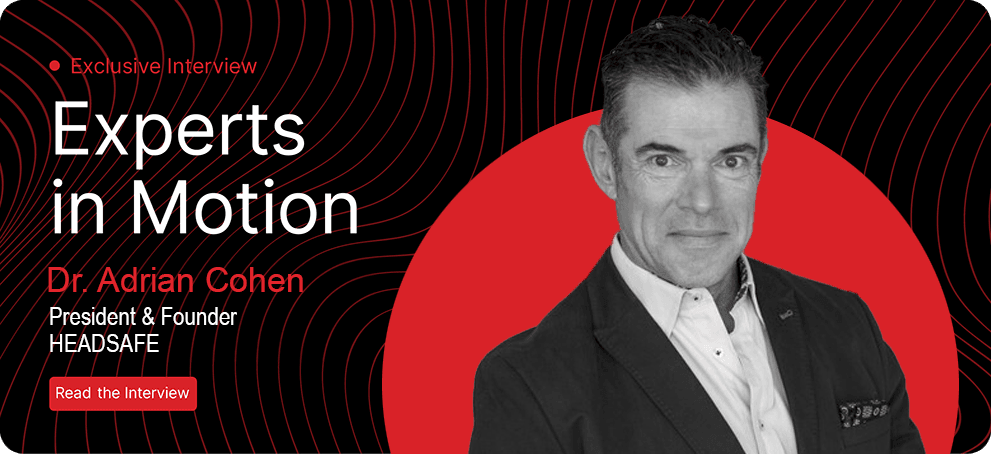Will Crawford: The Hidden Fix That Makes the Operating Room Safer, Faster, and More Comfortable

An Interview with Will Crawford, Smart Step Surgical, Founder and President
By Guillaume Viallaneix, Editor-in-Chief, The MedTech Digest & President, MedTech Momentum
Smart Step Surgical is tackling one of the OR’s most overlooked frustrations, turning a simple idea into a game-changing solution for surgeons, nurses, and staff alike.
I’ve known Will Crawford for a while, and what strikes me every time we talk is his relentless curiosity. He notices problems others overlook, and then has the courage to build solutions.
Will is the founder of Smart Step Surgical, a company on a mission to improve ergonomics and safety in the operating room. His journey from painting fences on his family’s farm to leading a MedTech startup is as inspiring as it is practical.
In this conversation, Will opens up about his personal path, the “aha” moment that sparked Surgistep, the lessons learned through setbacks, and why he believes something as simple as a surgical step stool could change the way hospitals think about innovation.
Guillaume Viallaneix (GV): Will, let’s start at the beginning. What shaped you into the entrepreneur you are today?
Will Crawford (WC): I grew up in a blue-collar family. My grandparents were entrepreneurs, my family even started one of the first solar-powered wineries in Northern California. By the time I was seven, I was painting fences for $1.50 an hour. Honestly, the dogs and horses got more paint on them than the fences, but it gave me an early sense of hard work.
That entrepreneurial bug never left me. Even when the winery had to be sold, I knew someday I’d want to run something of my own.
GV: And after school, how did you make the leap into healthcare?
WC: I studied biology, thinking I might become a physical therapist. But during an internship, I realized the day-to-day felt too routine. Around that time, a physical therapist introduced me to the world of medical device sales.
At first, I took a detour into commercial real estate, unfortunately right as the 2008 market crashed. By 2011, I was ready for a change. A friend convinced me to interview in MedTech, and I landed at Synthes Spine, later going through the DePuy merger. That experience taught me the business side of orthopedics, from Stanford’s ORs all the way down the Bay Area.
GV: That’s quite the entry. What was the “aha” moment that sparked Surgistep?
WC: It happened in the OR, during a spine case with neurosurgeon Dr. Jennifer Quon. She’s 5’1”. As I stacked step stools for her, she joked, “I wish I just had one that went up and down.”
We laughed, but I couldn’t shake it. I went home, googled, and realized nothing like that existed. A week later, I went back to her and said, “Remember that joke? I think we should build it.” That’s where Surgistep was born.
GV: Sometimes the simplest ideas are the most powerful. What happened next?
WC: At first, we thought we’d patent the idea, make drawings, and shop it to a big company like Stryker. We did build some traction, but ultimately it didn’t fit their strategy.
The big lesson? Large MedTech companies often prefer acquiring proven solutions over taking on development risk. That’s when I realized: if this product was going to exist, we’d have to prove it ourselves.
GV: Let’s pause there. What exactly is Surgistep product?
WC: Imagine never having to stack stools in the OR again. That’s the core.
Surgistep adjusts from under 5 inches up to 11, basically one to three stacked stools, but in a single, ergonomic unit. It also accommodates surgical foot pedals, so they don’t get kicked off or misplaced. And it moves easily on spring-loaded wheels, so staff can roll it without bending down or breaking sterility.
The third benefit is ergonomics. Surgeons and staff spend hours, sometimes 12 or more, on their feet. Our anti-fatigue mat, developed almost by accident when a supplier fell through, turned out to be a game-changer. It provides comfort, reduces strain, and may even help career longevity.
So the value is simple:
- No more stacking stools.
- Pedals stay secure.
- The OR becomes safer, faster, and more comfortable.

GV: Can you share a real-world story from the field?
WC: Sure. I recently worked with a neurosurgeon in Michigan who said he changes his step stools at least ten times per case. Every time, it disrupts workflow. When he tried Surgistep, he immediately saw how much smoother the case became. He could change height without interrupting the flow or asking staff to adjust things for him. That kind of feedback is gold. It validates what we’re building.
GV: Every founder faces setbacks. What were yours?
WC: Plenty. At one point, we learned late in the process that because Surgistep includes firmware, it triggered FDA requirements for ISO 13485 compliance. That almost derailed our trials. Thankfully, a regulatory expert friend showed us a path forward using usability studies, which allowed us to continue.
We’ve also had manufacturing hiccups, financing hurdles, and delays. But each challenge forced us to adapt, and sometimes those “whoops” moments, like switching to silicone mats, became unexpected advantages.
GV: How are you navigating what many entrepreneurs call the “Valley of Death,” that tough stretch between prototype and adoption?
WC: With bridge financing, grit, and a lot of faith. We secured a state-supported loan and grant to keep us moving. Right now, we’re in multiple trials at places like Intermountain Health, University of Utah, and Billings Clinic. We’ve also launched pre-orders with early-access discounts. Hospitals like it because it moves the expense out of their capital budget, and it ensures they’re first in line when our production run arrives.
GV: From your vantage point, how does Surgistep stand apart from competitors?
WC: Honestly, no one else is solving this problem the way we are. Hospitals have used the same steel stools for decades. With Surgistep, we’ve turned an overlooked pain point into a fully engineered Class I device with 144 components and 88 unique parts.
The differentiation is clear: our technology is not just another stool; we’re a workflow solution.
GV: Let’s touch on marketing. In MedTech, adoption often depends on clear communication. What’s been your strategy?
WC: Education and demos. Once surgeons see and try Surgistep, they don’t want to go back. That’s our biggest lever.
GV: That’s exactly what we see at MedTech Momentum, marketing isn’t about features, it’s about showing value in context. Hospitals invest not only in technology but in the story: “We care about our staff, we attract surgeons, we provide the best environment.” Surgistep fits that narrative beautifully.
GV: How do you see investors looking at your opportunity?
WC: The total addressable market is bigger than it seems. There are over 200,000 ORs in the U.S. If even two units are needed per OR, the market is massive. We’re still debating how fast to scale, whether to stay bootstrapped or go institutional. But either way, the opportunity is real, and the traction so far has been strong.
GV: And from the customer’s perspective, how do you deliver value to them?
WC: For hospitals, it’s safety and efficiency. For surgeons, it’s comfort and ergonomics. And for staff, it means less bending, less risk of contamination, and fewer workplace injuries.
When hospitals invest in staff well-being, it pays off—both financially and in loyalty.
GV: Looking ahead, what’s your broader vision?
WC: In five years, I want Surgistep to be the new standard. Just like you’d never go back to a car without a key fob, I don’t think surgeons will want to go back to stacking stools once they’ve used this.
Beyond that, we’re developing transport solutions, custom drapes, standalone mats, and other workflow efficiency tools. Always in the same theme: ergonomics, safety, and smarter OR design.
GV: Final question. How would you like to be remembered—as a leader, and as a person?
WC: I’d like to be remembered as someone who solved real problems for real people. Not chasing shiny objects, but building things that make work safer and better for surgeons and staff. If Surgistep changes the standard and improves careers, even in a small way, that’s a legacy I’d be proud of.
Will’s story is a reminder that innovation often comes from the ground up, sometimes quite literally. By paying attention to the overlooked frustrations of daily OR life, Smart Step Surgical has created a product with the potential to set a new standard in ergonomics and workflow.
For hospital leaders, the message is clear: investing in staff well-being is not a luxury, it’s a necessity. For investors, Surgistep represents a differentiated play in a massive, under-innovated market.
To learn more about Smart Step Surgical, schedule a demo, or explore investment opportunities, visit smartstepsurgical.com or connect with Will Crawford directly on LinkedIn.










